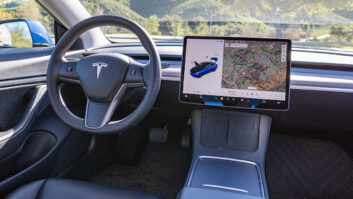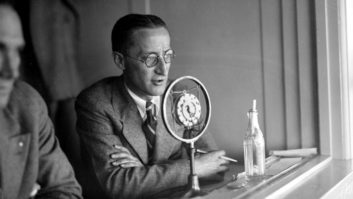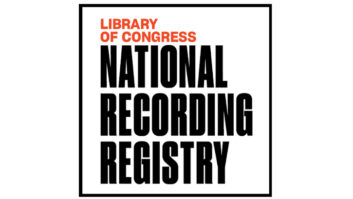Motorola’s New DSP-Based Receiver Core Could Be Music to Broadcasters’ Ears
By now you may have heard a little about Motorola’s “Symphony” concept for a DSP-based radio receiver, and perhaps you’ve wondered if any of the hype about extended range and improved audio quality was warranted.
Well, after some deeper technical exploration and discussion with Motorola engineers, there indeed seems to be something for broadcasters to get excited about. Just as much of AM’s woes today are due to poor receiver design, the stock of both AM and FM stock could be buoyed by the improvements offered in the Symphony design. If the technology takes hold broadly throughout the receiver marketplace, Symphony could have as much or more real impact on listener perceptions of radio quality than IBOC will, and sooner, at no cost to broadcasters.
Of course, Motorola is quick to point out that Symphony could work with IBOC (although not in its initial design), to further improve the listening experience. In fact, Symphony could work with any number of radio and audio formats, both analog and digital, to provide a cost-effective and extremely flexible sound platform for fixed and mobile receivers.
Harnessing the 56k
Among audio geeks, the Motorola 56000 DSP family is the stuff of legend. The company has spawned a dynasty of programmable chips that are to the audio hardware industry what Java and C++ are to computer software programmers.
In the past, the radio broadcast community has only benefited from this product line by way of audio workstations and some professional audio processing gear. Now, thanks to improved production efficiencies and economies of scale, the cost of the Motorola’s latest 563xx series has been driven to the point where it can be competitive for consumer radio receivers, adding a negligible cost increment to traditional designs, but greatly increasing functionality and quality.
The plan for Symphony uses such a chip as its central core, with some additional specialized elements and a couple of other off-the-shelf Motorola chips, to provide unprecedented performance in an integrated (and therefore inexpensive) package.
Fig. 1 shows the basic plan of the receiver and its three-chip design. The first chip is an RF front end, which allows external filter insertion and digital tuning control. The Symphony design allows either one or two of these chips to be used, the latter applied to diversity antenna implementations.
(click thumbnail)Fig 1. Motorola’s Symphony digital radio chipset is show in its typical configuration.
Unlike traditional automotive diversity receivers, however, the system doesn’t simply switch between the antennas for the better signal, but combines the two signals optimally in the manner of a phased-array design.
The IF output of this stage proceeds to the so-called “mixed signals” chip, where the received signal is converted to the digital domain, and stays that way until its output to audio amplifiers and speakers. This chip also provides A/D conversion for external audio inputs, and handles the D/A conversion for the final output.
Once the IF signal has been digitized, it is relatively easy to implement an adaptive IF filter that can dynamically vary its bandwidth to accommodate a wide range of spectral conditions. The Symphony system detects the width and energy of signals adjacent to the desired channel, and adjusts IF filter bandwidth accordingly, doing so in small increments so bandwidth is not narrowed any more than necessary. This allows an optimum balance between noise, distortion and frequency/phase response performance. Receiver manufacturers can also adjust the behavior of this filter to suit their design goals.
Finally, the powerful 56300 chip takes the baseband AM or FM signal from the IF chip and finishes the job. The AM/FM demodulator in this stage also is digitally defined, and therefore provides increased sensitivity while maintaining a low noise floor. This has the effect of extending the useful range of the receiver, allowing it to receive listenable signals at greater distances than most traditional radios.
Subcarrier performance can also be improved through digital-domain processing. There could be applications of the Symphony design by some implementers that provide higher-quality and more uniform performance for the reception of FM subcarrier audio services. The Symphony system also supports RDS intrinsically.
Fig. 2 shows how this baseband audio processor can work with one or two simultaneous incoming analog or digital signals and perform the necessary decoding, audio processing, integration with other audio sources (e.g., cell phone or navigation system in the car), and routing to multiple amplifiers and speakers.
(click thumbnail)Fig 2. A logical block diagram of the baseband audio processor’s functionality
Note that the system can inherently manage two simultaneous sources, sending one to a vehicle’s front speakers, for example, and the other to headphone outputs in the back seat. (No more fighting with the kids about which station to listen to!) The system can also handle multichannel audio sources for matrixed surround or 5.1 channel listening.
Multipath performance
One of Motorola’s claimed benefits of the system is reduced audibility of multipath artifacts in FM reception.
Steve Tremmel, operations manager of Motorola’s Austin-based Driver Information Systems Division, explained that this functionality results from two primary design components. The first is the diversity combining process noted earlier, and the second is “multipath mitigation via post-IF equalization algorithms,” according to Tremmel. These proprietary techniques are executed in the 56300 chip, and are designed to provide substantial reduction in the audible impact of multipath interference in FM reception.
Tremmel explained that the baseband chip was “a standard, 24-bit, 56300 core, with new, custom and very small hardware acceleration added in an integrated design.” This is the key advance that makes the Symphony design possible, in his view.
Regarding IBOC, Tremmel pointed out that manufacturers could opt to add a post-digitized-IF I/O port, into which a future external hardware decoder could be inserted to handle HD Radio or any other new format. Later Symphony chipsets might handle IBOC decoding internally, he added, probably with the addition of another hardware acceleration block.
Audio elements
The value of the Symphony design will be most noticeable to users in terms of audio performance. For example, the FM stereo decoder on the 56300 baseband chip can provide better stereo separation and signal-to-noise ratios than typical conventional receivers without significantly increasing manufacturing cost.
Moreover, the chip is programmable, allowing it to take on varying sonic characteristics as the radio manufacturer desires. This process is accomplished by a plug-in architecture, using code components offered by Motorola or from third parties. Motorola calls these plug-ins Post Processing Phases. Up to 25 “slots” for plugging in PPPs are available on the chip, typically with eight reserved for selections from Motorola’s standard library (e.g., equalization, dynamic range compression), and the remaining 13 available for the implementer’s use in customizing feature sets.
A number of these optional PPPs are available for downloading by implementers (e.g., Lucasfilm THX, virtual 3D soundfields, Karaoke). Motorola also provides implementers and third-party developers with a software architecture for creating their own new features. This process is based on the well-established 56000 programming language, and it includes an API that provides rules for PPP insertion into the processing environment.
Such a design allows substantial product differentiation on a single, high-performance platform, and enables manufacturers to create unique functionality with minimal investment. Ultimately, consumers, manufacturers and broadcasters all reap the benefits of this common platform approach.
Who needs IBOC?
As you may have noticed, Motorola’s claims for Symphony’s improved FM multipath performance and generally increased audio quality are the same primary claims made by Ibiquity’s HD Radio system.
But while the latter requires substantial prospective investment by broadcasters and an unknown incremental cost to consumers, the Symphony method costs broadcasters nothing, and maximizes the value of any other audio chain improvements made at their radio facilities. Symphony also seems unlikely to introduce significant cost burdens to consumers, thus hastening adoption.
Although a Symphony-based receiver might make an IBOC signal sound even better, once first generation Symphony devices get into consumer’s hands there might be even less incentive than today for many consumers to convert to (possibly more expensive) IBOC radios.
Meanwhile, the audible improvements of a Symphony-based receiver could also help terrestrial broadcasters compete with the compressed digital signals of satellite radio services, at least on a qualitative level. Many “golden ears” claim that an ideal (or even a very good) FM broadcast can sound noticeably better than audio subjected to the high compression ratios of digital codecs currently used by satellite radios (this may also apply to IBOC’s somewhat less aggressive compression), and Symphony products could help make those beneficial conditions more prevalent.
Of course, this implies that the station’s audio chain quality is up to the task, so improvements in this area are worthwhile in the meantime, and will benefit all listeners to some extent.
Marketing value
One major radio receiver maker, Hyundai Autonet, has announced plans to build radios using the Symphony chipset. This company makes radios for several Asian car manufacturers, and offers aftermarket devices under the Audiovox brand. At press time, Motorola reportedly was in negotiation with other important manufacturers, and expected to announce completion of these deals soon.
Meanwhile, Blaupunkt recently announced its Digiceiver radio (based on a different Motorola chipset but offering some similar features); and Philips, Texas Instruments and ST Microelectronics are developing chips aimed at the digital radio market. Analysts point out that with the expected flood of “digital radios” in the market next year, it will be ever harder for broadcasters to differentiate the benefits of IBOC’s digital transmission from digitally processed analog AM and FM signals in the receiver.
This should make life interesting for the deployment of HD Radio. The fate – and, in fact, the very definition – of “digital radio” may hang in the balance of consumer electronics’ next few years of product deployments and marketing tactics. The race is on.













